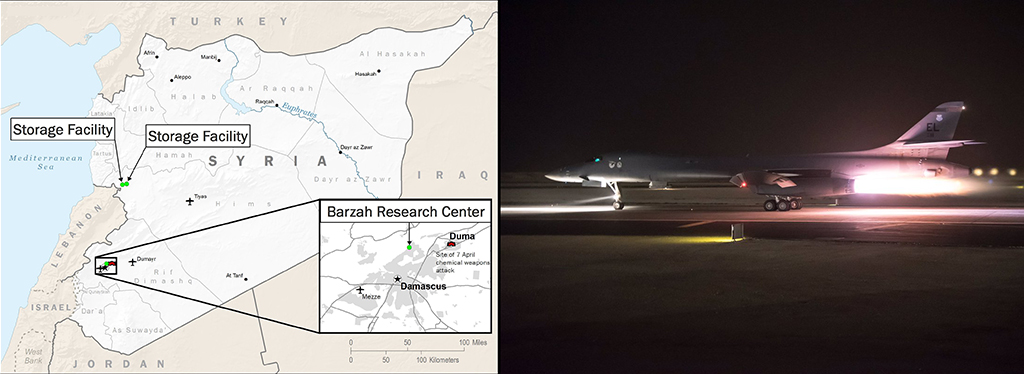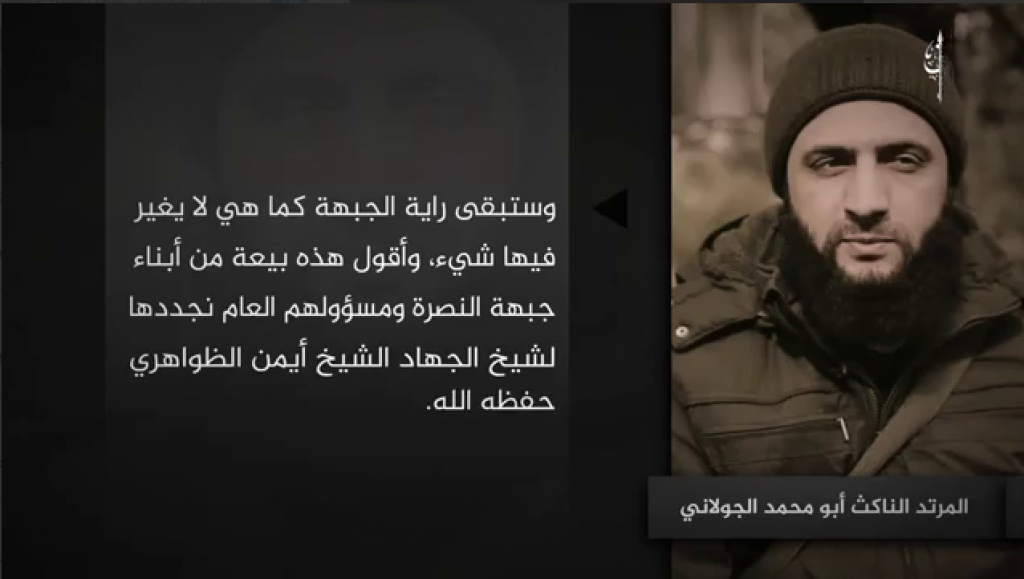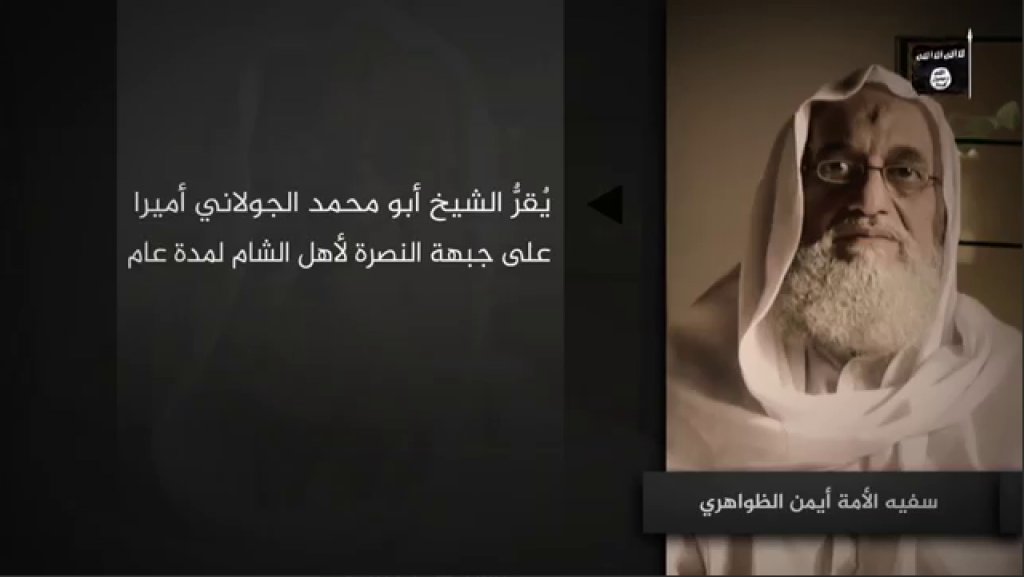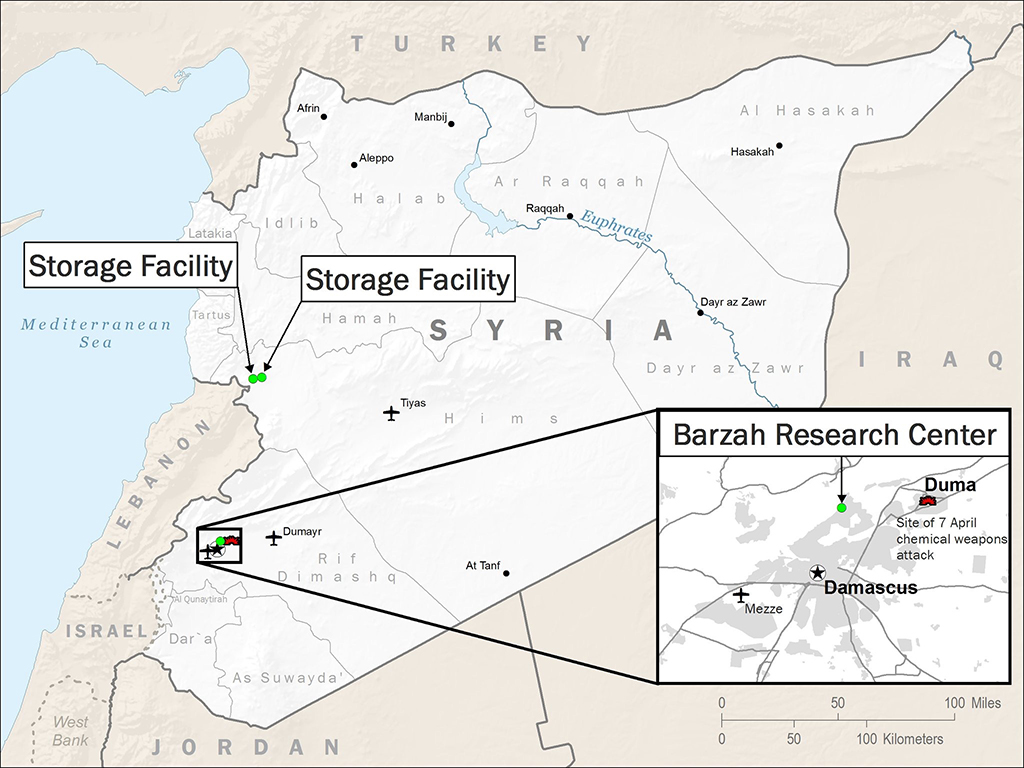
Pentagon Publishes Effective Strike Data. Russia Claims 71 Cruise Missiles Downed.
The targets included a research facility in the Syrian capital of Damascus alleged to be used in chemical weapons production, a storage facility thought to house chemical weapon stockpiles west of Homs, Syria and a command and control facility outside Homs claimed to also be used for weapons storage.
The last cruise missiles may have landed in Syria for now but the propaganda war is in full swing between the U.S. and its allies as Russia and Syria claim vastly different results from overnight strikes.
Soon after the strikes in Syria ended today Russian news media claimed that 71 cruise missiles were intercepted during the strikes on Syria Friday night/Saturday morning. In a press conference today, Russian Chief of the Main Operational Directorate of the Russian General Staff, Colonel Sergei Rudskoy, said Syrian military facilities had suffered only minor damage from the strikes.
By contrast, in a press conference on Saturday morning, April 14, U.S. Pentagon spokesperson Dana White told journalists the U.S. and its allies, “successfully hit every target” during the strikes from the U.S., Britain and France. U.S. Marine Lt. Gen. Kenneth F. McKenzie Jr., The Director of the Joint Staff (DJS) displayed photos of targets that were hit in Syria during the press conference. “We are confident that all of our missiles reached their targets,” Lt. Gen. McKenzie told reporters, in direct contrast to Russian claims that cruise missiles were shot down by Syrian defenses.
The U.S. released the following details on weapons employed in the overnight strike:
From the Red Sea:
USS Monterey (Ticonderoga-class guided-missile cruiser) – 30 Tomahawk missiles
USS Laboon (Arleigh Burke-class destroyer) – 7 Tomahawk missiles
From the North Arabian Gulf:
USS Higgins (Arleigh Burke-class destroyer) – 23 Tomahawk missiles
From the eastern Mediterranean:
USS John Warner (Virginia class submarine) – 6 Tomahawk missiles
A French frigate ship (could not understand name) – 3 missiles (naval version of SCALP missiles)
From the air:
2 B-1 Lancer bombers – 19 joint air to surface standoff missiles
British flew a combination of Tornado and Typhoon jets – 8 Storm Shadow missiles
French flew a combination of Rafales and Mirages – 9 SCALP missiles
One fact that both sides seem to agree on is that all U.S., French and UK aircraft involved in the strike returned to their bases successfully. Ships that participated in the strike remained at sea without armed confrontation from Syria or Russia. This alone marks a victory for the allied forces striking Syria following a week of rhetoric by Russia about defending Syrian interests. Based on this outcome it would appear the U.S. and its allies can strike targets in the heavily defended region with impunity. U.S President Donald Trump tweeted “Mission accomplished!” on Saturday morning.
While claims of success or failure by either side in a conflict are usually manipulated to control public perceptions Russia does have a long reputation for effective and highly adaptive air defense systems, as the U.S. does for precision strike success using cruise missiles. Russia also has a reputation for using media as a tool to craft perception of outcomes, historically to a greater degree than the U.S. But despite Russia’s admittedly dangerous air defense technology in Syria, it would appear the three nations delivering the overnight strikes in Syria achieved their objectives without loss.
One potential factor that may have influenced the effectiveness of some U.S. weapons systems was that the U.S. Administration was very vocal about the upcoming strikes, giving significant advanced warning to Russian-supplied Syrian air defense units. It is reasonable to suggest that Syrian air defense units spent this entire previous week preparing for a predicted U.S. and allied strike on Syria. Based on intelligence gathered by Syrian and Russian air defense crews from the U.S. strike exactly a year and a week ago on Shayrat Airbase in Syria, air defense crews were likely well-drilled and prepared to meet a U.S.-led attack on their claimed chemical weapons facilities. By contrast, this also gave the U.S led trio of nations participating in the strike time to gather intelligence about Syrian air defense capabilities so attack plans could be optimized to avoid losses. This approach appears to have prevailed in this strike.
If Syrian air defense units were ineffective in stopping U.S. cruise missiles, and most information now points to that outcome (actually, it looks like the Syrians fired their missiles after the last missile had hit), this represents a significant blow to the Assad regime and to Russia’s ability to assist in an effective air defense in the region.
The Tomahawk missile, one of several stand-off weapons used in the overnight strikes in Syria, is an older and still effective weapons platform especially in its most updated versions. Tomahawks were first employed in the 1991 strikes against Iraq when 288 of them were fired in the opening days of the war. While first adopted over 35 years ago, the Tomahawk has been repeatedly upgraded but remains somewhat limited by its overall dimensions that prevent it from having a larger engine installed that would deliver greater speed. The missile currently flies to its target at low altitude and subsonic speeds of about 550 miles per hour. This low speed may make it vulnerable to sophisticated air defense systems Russia is known for such as its advanced
S-400 system, called the SA-21 Growler in the west. However, the low altitude flight profile of an attacking Tomahawk, its ability to use terrain masking for cover and concealment and its relatively small size, significantly smaller than a manned combat aircraft, make it a difficult target for even the most advanced air defense systems.
The Russian supplied air defense systems in use in Syria that include the S-400 missile and its 92N6E “Gravestone” fire control radar along with other systems are highly mobile and highly adaptive. That means that, while intelligence sources can pinpoint the locations of Syrian air defense systems prior to a strike, those systems can be moved in the hours before a strike to present a different threat posture to attacking missiles and aircraft. Most of the launch platforms for the BGM-109 Tomahawk are large, non-stealthy surface ships, although submerged submarines also launch Tomahawks. The newest version Block IV Tomahawk missile employs several upgrades to its guidance and targeting systems that improve accuracy and flexibility, but may increase time over a target area, making the missile potentially more vulnerable to sophisticated air defense systems.
It is likely more modern stand-off weapons like the UK’s MBDA Storm Shadow and French
SCALP-EG cruise missile along with the new
AGM-158 JASSM-ER (Joint Air-to-Surface Standoff Missile Extended Range) were highly effective in Friday night’s strike on Syria by UK, France and the U.S. If this were the case the Tomahawks may have served a purpose by engaging relatively lightly defended targets while attacks by the more recent version of SCALP and JASSM-ER missiles could have struck more heavily defended targets.
As with most conflicts the ancient cliché about the truth being one of the first casualties seems to be true in this latest exchange in Syria, but the emerging strike intelligence from the U.S., England and France suggest this round goes to them and a significant blow was dealt to the Russian-backed Assad.











